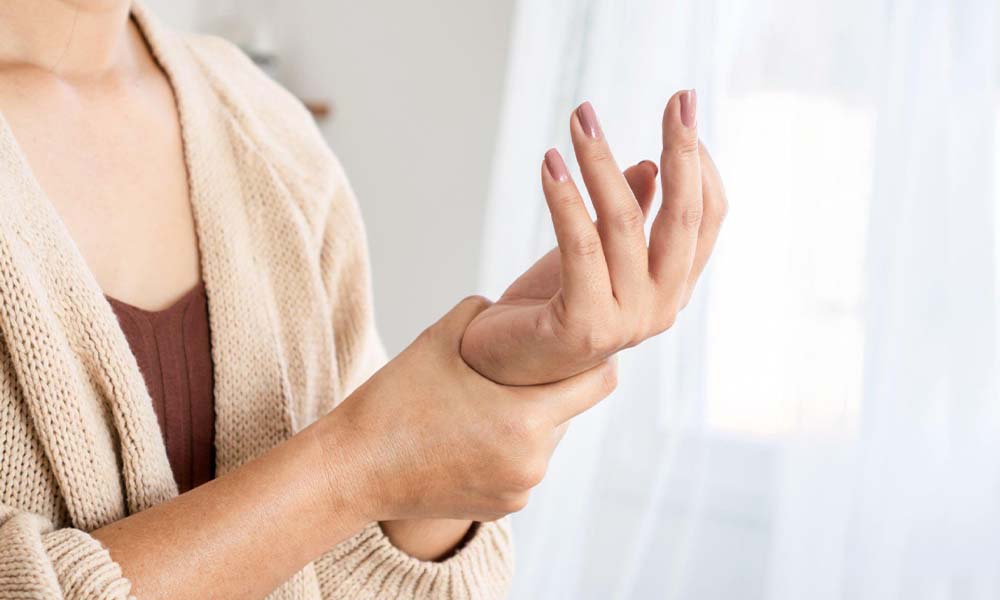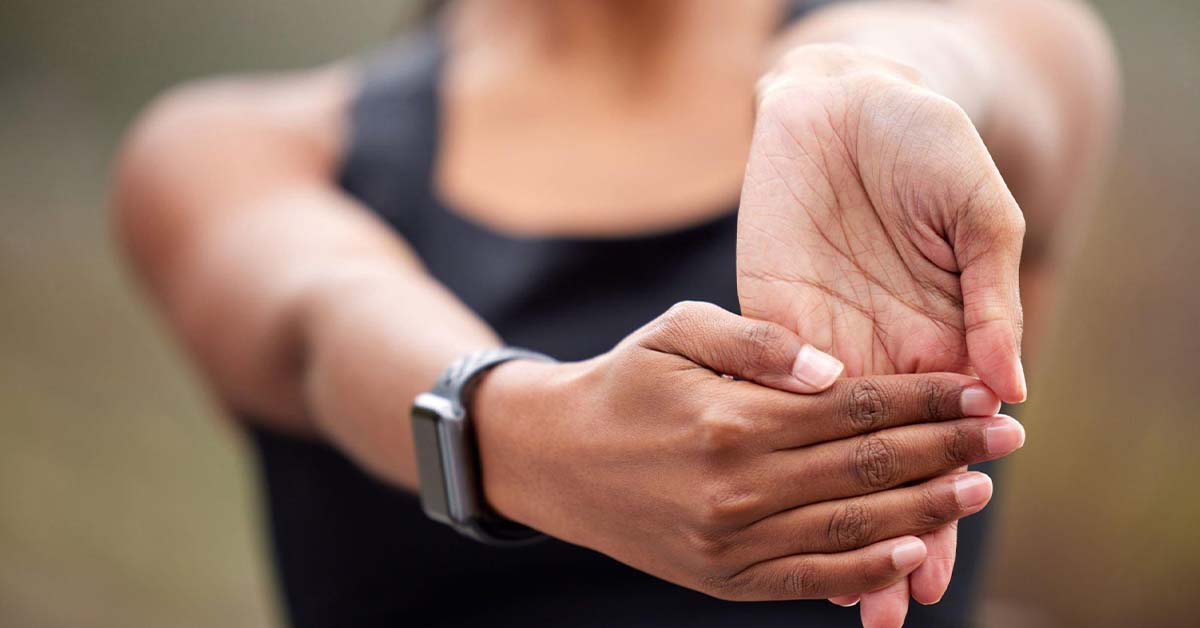After an intense workout or strenuous exercise routine, it’s not uncommon to experience post-workout stiffness in various parts of the body. Among these, the arm is a frequently affected area, with muscles and joints feeling tight and restricted in movement. Whether you’re a fitness enthusiast, an athlete, or simply someone who enjoys staying active, dealing with arm stiffness can be frustrating and limiting.
However, this comprehensive guide will delve into the causes of post-workout arm stiffness, explore how it can impact your daily life and fitness routines, and provide you with a range of practical tips and exercises to alleviate this stiffness and prevent it from hindering your active lifestyle. Whether you’re recovering from an intense weightlifting session, dealing with soreness from an athletic competition, or just seeking ways to maintain healthy arm mobility, this article will offer valuable insights to help you overcome post-workout stiffness and keep your arm in top form.
Table of Contents
ToggleCauses of post-workout stiffness in the arm

-
- There can be several causes of post-workout stiffness in the arm. One common reason is overexertion or pushing yourself too hard during your workout. When you engage in activities that your muscles are not accustomed to, it can result in excessive strain and damage to the muscle fibers, leading to stiffness.
- Another cause of post-workout stiffness in the arm is improper form or technique during exercises. Using incorrect form puts unnecessary stress on the muscles and joints, increasing the likelihood of stiffness and discomfort afterwards. It is crucial to maintain proper form and technique throughout your workouts to minimize the risk of post-workout stiffness.
- Additionally, inadequate warm-up and cool-down routines can contribute to post-workout stiffness. Skipping warm-up exercises deprives your muscles of the preparation they need for intense activity, while neglecting to cool down properly prevents your body from transitioning back to a resting state. Both of these factors can make your muscles more susceptible to stiffness and soreness.
Importance of regaining full range of motion
-
- Regaining full range of motion in your arm after a workout is essential for several reasons. Firstly, it allows you to perform daily activities without discomfort or limitations. Whether it’s reaching for objects, lifting weights, or participating in sports, having a full range of motion in your arm ensures optimal functionality.
- Furthermore, regaining full range of motion helps prevent imbalances and compensatory movements. When your arm is stiff and lacks mobility, you may inadvertently rely on other muscles or joints to compensate for the restricted movement. This can lead to imbalances in your musculoskeletal system and increase the risk of injury in the long run.
- Additionally, regaining full range of motion promotes efficient muscle recovery. By moving your arm through its full range of motion, you increase blood flow to the muscles, delivering oxygen and nutrients that aid in the repair process. This can help accelerate the recovery time and reduce post-workout stiffness.
Stretching exercises for the arm
- Pull it towards your left side: Hold this stretch for 20-30 seconds and then repeat on the other side.
- Biceps Stretch: Extend your right arm in front of you, palm facing up. Using your left hand, grasp your right fingers and gently pull them towards your body. You should feel a stretch in your biceps. Hold for 20-30 seconds and then switch sides.
- Wrist Flexor Stretch: Extend your right arm in front of you with your palm facing down. Use your left hand to grasp your right fingers and gently pull them towards your body. You should feel a stretch in the front of your forearm. Hold for 20-30 seconds and repeat on the other side.
Remember to perform these stretches in a slow and controlled manner, avoiding any jerking or bouncing movements. Gradually increase the stretch as you feel more comfortable, but never push yourself to the point of pain.
Foam rolling techniques for relieving post-workout stiffness

Another effective method for relieving post-workout stiffness in the arm is using a foam roller. Foam rolling is a self-myofascial release technique that helps release tension in the muscles and fascia, promoting mobility and reducing stiffness. Here are two foam rolling techniques specifically targeting the arm muscles:
- Upper Arm Roll: Sit on the floor with your legs extended in front of you. Place the foam roller under your right upper arm, just above the elbow. Using your left leg and hand for support, slowly roll the foam roller up towards your shoulder, applying gentle pressure. Once you reach your shoulder, reverse the movement and roll back down to the starting position. Repeat for 1-2 minutes and then switch to the other arm.
- Forearm Roll: Begin by kneeling on the floor with the foam roller in front of you. Place your right forearm on the foam roller, with your palm facing down. Slowly roll the foam roller up towards your elbow, applying gentle pressure. Once you reach your elbow, reverse the movement and roll back down to the starting position. Repeat for 1-2 minutes and then switch to the other arm.
Foam rolling can be uncomfortable at times, especially if you have significant stiffness or tightness in your arm muscles. Start with gentle pressure and gradually increase as you become more accustomed to the sensation. Remember to breathe deeply and relax your muscles as you roll.
Massage therapy for reducing muscle tightness
Massage therapy is a highly effective method for reducing muscle tightness and relieving post-workout stiffness in the arm. The hands-on manipulation of the muscles helps increase blood flow, relax the tissues, and promote healing. Here are two massage techniques that can be beneficial for the arm:
- Effleurage: Start by applying a small amount of massage oil or lotion to your arm. Using long, sweeping strokes with moderate pressure, glide your hands from the wrist to the shoulder. Repeat this motion several times, gradually increasing the pressure as your arm relaxes. Effleurage helps warm up the tissues and prepares them for deeper massage techniques.
- Friction Massage: Place your thumb or fingertips on the affected area of your arm. Apply deep, circular motions with firm pressure, focusing on any knots or tight spots. This technique helps break up adhesions and release tension in the muscles. Continue for 1-2 minutes, adjusting the pressure as needed.
Massaging your arm can be done using your own hands or with the assistance of a qualified massage therapist. If you are performing self-massage, make sure to use proper body mechanics and take breaks if needed. It is important to listen to your body and not apply excessive pressure that could cause pain or injury.
Rest and recovery tips for overcoming post-workout stiffness
Rest and recovery play a crucial role in overcoming post-workout stiffness in the arm. Here are some tips to help you recover effectively:
- Get enough sleep: Aim for 7-9 hours of quality sleep each night to support muscle repair and overall recovery. During sleep, your body releases growth hormone, which aids in tissue regeneration.
- Hydrate: Drink plenty of water throughout the day to stay hydrated. Dehydration can exacerbate muscle stiffness and hinder the recovery process.
- Nutrition: Fuel your body with a balanced diet rich in lean proteins, fruits, vegetables, and whole grains. These nutrients provide the building blocks necessary for muscle repair and recovery.
- Active recovery: Engage in light, low-impact activities such as walking or swimming to promote blood flow and alleviate stiffness. Avoid high-intensity workouts until your arm has fully recovered.
- Cold and heat therapy: Apply ice packs or cold compresses to your arm for 15-20 minutes at a time to reduce inflammation and numb the area. After 48 hours, you can switch to heat therapy using a warm towel or heating pad to promote relaxation and increase blood flow.
Remember to listen to your body and give yourself adequate time to recover. Pushing through excessive pain or discomfort can lead to further injury and prolong the recovery process.
When to seek medical attention

In most cases, post-workout stiffness in the arm can be effectively managed with rest, stretching, and self-care techniques. However, there are instances where seeking medical attention is necessary. If you experience any of the following symptoms, it is recommended to consult a healthcare professional:
- Severe pain that does not improve with rest and self-care measures
- Swelling, redness, or warmth in the affected area
- Inability to move your arm or perform daily activities
- Numbness or tingling sensations in the arm or hand
- Persistent stiffness or limited range of motion for more than a few days
These symptoms may indicate a more serious injury or underlying medical condition that requires proper diagnosis and treatment. A healthcare professional will be able to assess your condition and provide appropriate guidance.
Prevention strategies for future workouts
While it is common to experience post-workout stiffness, there are several preventive measures you can take to minimize its occurrence in the future. Here are some strategies to consider:
- Gradual progression: Gradually increase the intensity, duration, and complexity of your workouts over time. This allows your muscles to adapt and minimizes the risk of excessive strain and stiffness.
- Proper warm-up and cool-down: Always start your workouts with a thorough warm-up routine to prepare your muscles for activity. Similarly, conclude your workouts with a cool-down routine to gradually bring your body back to a resting state.
- Focus on form and technique: Pay close attention to your form and technique during exercises to ensure proper muscle activation and minimize unnecessary strain. Consider working with a qualified trainer or coach to learn correct movement patterns.
- Rest and recovery: Allow your body sufficient time to recover between workouts. Incorporate rest days into your training schedule and listen to your body’s signals for when it needs a break.
- Cross-training: Incorporate a variety of exercises and activities into your routine to engage different muscle groups and prevent overuse injuries. This also helps maintain overall balance and flexibility.
By implementing these preventive strategies, you can reduce the likelihood of post-workout stiffness and promote long-term musculoskeletal health.
Frequently Asked Questions
What causes post-workout stiffness in the arm?
Post-workout arm stiffness can result from overuse of arm muscles, inadequate stretching, or muscle fatigue. It can also occur due to improper form during exercises or lifting weights.
How can post-workout arm stiffness affect my daily activities?
Arm stiffness can limit your range of motion, making simple tasks like reaching for objects, dressing, or even combing your hair uncomfortable. It can also hinder your ability to perform well in subsequent workouts.
Are there specific exercises to relieve post-workout arm stiffness?
Yes, there are various stretching and mobility exercises that can help alleviate arm stiffness. These exercises can improve blood flow, reduce muscle tension, and enhance flexibility in the affected areas.
Is it advisable to continue working out with arm stiffness?
Exercising with arm stiffness is generally safe, but it’s crucial to choose exercises that won’t exacerbate the stiffness. Focus on gentle movements and stretches that promote recovery.
How long does it typically take to recover from post-workout arm stiffness?
Recovery time varies from person to person and depends on the severity of the stiffness. With proper care, mild stiffness may resolve within a day or two, while more severe cases may take several days to a week.
Are there preventive measures to avoid post-workout arm stiffness in the future?
To prevent arm stiffness, prioritize proper warm-ups, maintain good form during exercises, incorporate regular stretching into your routine, and ensure adequate hydration and nutrition.
Conclusion
Post-workout stiffness in the arm is a common occurrence, but it doesn’t have to hinder your progress or limit your range of motion. By understanding the causes of post-workout stiffness and the importance of addressing it, you can take proactive steps to regain full range of motion in your arm. Incorporating stretching exercises, foam rolling techniques, and massage therapy into your recovery routine can alleviate stiffness and promote muscle repair. Additionally, rest, hydration, and proper nutrition play vital roles in overcoming post-workout stiffness. Remember to listen to your body, seek medical attention if needed, and implement preventive strategies to minimize future stiffness. With these strategies in place, you can continue to pursue your fitness goals with confidence and comfort.


